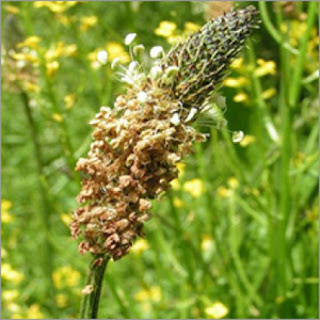Sesame seeds - (Sesamum indicum) – Health Benefits
Sesame seeds are tiny, flat oval seeds with a
nutty taste and a delicate, almost invisible crunch. They come in a host of
different colors, depending upon the variety, including white, yellow, black
and red. Sesame seeds add a nutty taste and a delicate, almost invisible,
crunch to many Asian dishes. Sesame
seeds, popularly known as ‘Til‘
in Hindi, ‘Nuvvulu‘ in Telugu, ‘Ellu‘ (Tamil, Malayalam, Kannada), ‘Teel‘ in Marathi and ‘Til‘ in Bengali are the oldest
condiment known to mankind.
They are nutty and fragrant seed variants.
They add a lovely crunch to many Asian and Middle Eastern dishes. Both these
races are known for their longevity .The benefits of sesame are not just
culinary but this nutrient-dense condiment is good for our bodies as well.
Sesame seeds include a combination of vitamins and minerals and are one of the
healthiest foods in the world. They
are also the main ingredients in tahini (sesame seed paste) and the wonderful
Middle Eastern sweet call halvah.
They are available throughout the year. The
sesame seeds are extremely rich in calcium and are useful in calcium
deficiency. Natural sesame seeds are largely served in bakery products
such as breads, bread sticks, cookies, candies, pasta, vegetables & curry
dishes. The toasted variety of natural sesame seeds are used in chocolate,
ice-cream and halva.
Sesame
seeds are full of high quality protein making up 20 percent of the seed with
4.7 grams of protein per ounce.
Sesame
seeds contain magnesium and other nutrients. Sesame oil has been shown to prevent diabetes, and
it can also improve plasma glucose in hypersensitive diabetics. The
same study above reveals how sesame oil lowers blood pressure in diabetics.
Sesame seeds are full of magnesium – a key nutrient known
to help lower blood pressure. Sesame helps
lower cholesterol levels, because it contains phytosterols that block
cholesterol production. Black sesame seeds are especially high in phytosterols.
The high fiber content of
sesame seeds helps the intestines with elimination. The high zinc content helps
produce collagen, giving skin more elasticity and helping repair damaged body
tissues. Regular use of sesame oil can reduce skin cancer.
Sesame seed oil can help heart health by
preventing atherosclerotic lesions with the antioxidant and anti-inflammatory
compound known as sesamol. Sesame seeds contain anti-cancer compounds
including phytic acid,
magnesium and phytosterols. Sesame seeds
have the highest phytosterol content of all seeds and nuts.
Sesame seeds contain the stress-relieving minerals magnesium and calcium. Sesame also contains the calming vitamins thiamin and tryptophan that help produce serotonin, which reduces pain, assists moods and helps you sleep deeply.
Sesame seeds contain the stress-relieving minerals magnesium and calcium. Sesame also contains the calming vitamins thiamin and tryptophan that help produce serotonin, which reduces pain, assists moods and helps you sleep deeply.
Black sesame seeds are particularly rich in iron, so they’re highly recommended for those with anemia and weakness. Protects from Radiation Damage to DNA
Sesamol in sesame seeds and sesame oil, has been shown to protect against DNA damage caused by radiation. The high copper content in sesame seeds prevents and relieves arthritis, and strengthens bones, joints and blood vessels. Sesame helps protect you from alcohol’s impact on your liver, helping you maintain healthy liver function.Sesame seed oil prevents harmful ultraviolet rays of the sun from damaging your skin, thus preventing the appearance of wrinkles and pigmentation. A handful of sesame seeds contains more calcium than a glass of milk. Also the high zinc content of sesame boosts bone mineral density.
A sesame oil massage improves growth and improves sleep. Rashes on a baby’s skin — especially where the diaper is — can be protected with sesame seed oil by rubbing it in. Sesame also helps reverse dry skin. In traditional Chinese medicine there is a relationship between the liver and eyes. The liver sends blood to the eyes to support functioning. Black sesame seeds are the best . Sesame seeds can be consumed in the raw or dried form, or even as roasted snacks. They are used as an ingredient in several cuisines. Dry roasted sesame seeds are ground with olive into a thin, light brown colored paste, known as ‘Tahini’, which is a popular middle-eastern dip.
In Europe, they are
commonly used in the manufacture of margarine. There are several varieties of
sesame seeds depending on the type of cultivar such as white, black and brown
seeds. White sesame seeds have higher iron content than the black ones and are
mostly used as ingredients in food or in the form of oil. Black sesame seeds
are more flavorful and have a stronger aroma than white or brown sesame seeds
and are preferably used in medicines. They contain 60% more calcium than the
white ones. White sesame seeds are hulled, whereas the black and brown ones
retain their hulls.












































